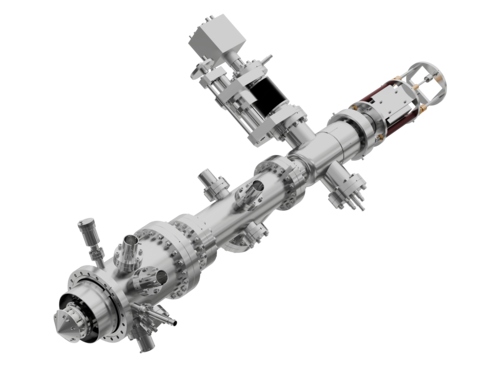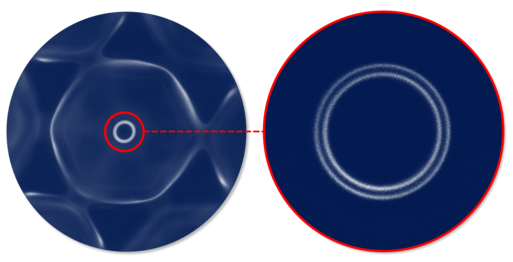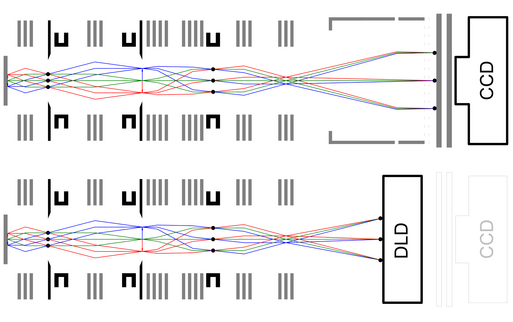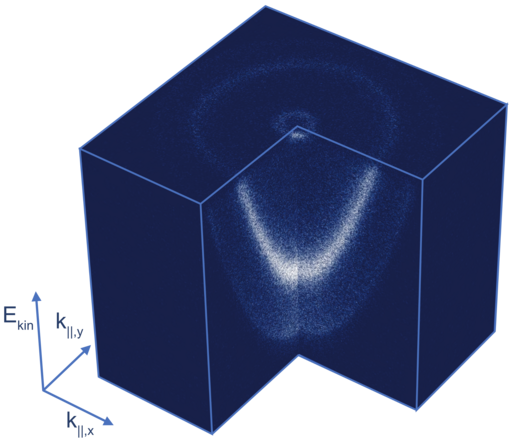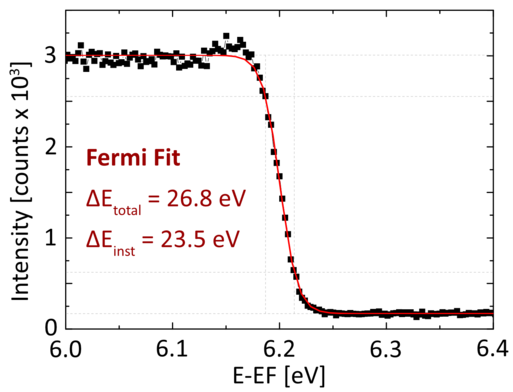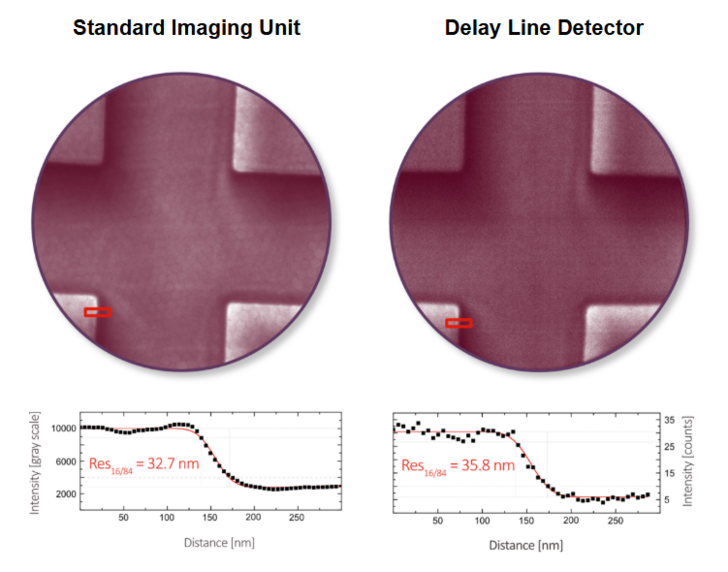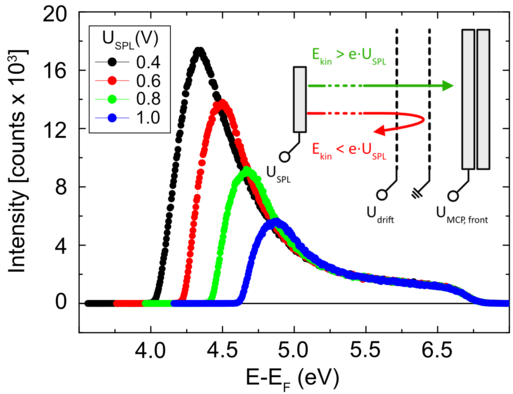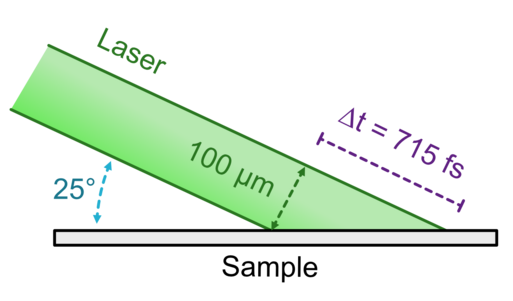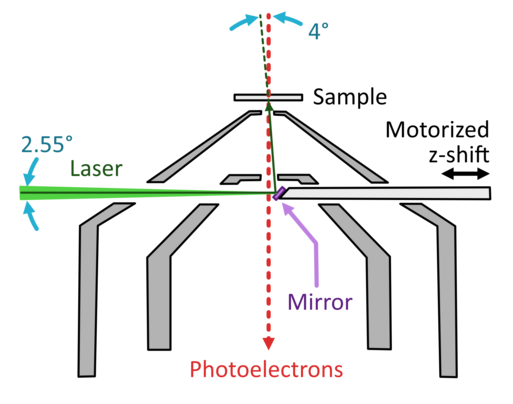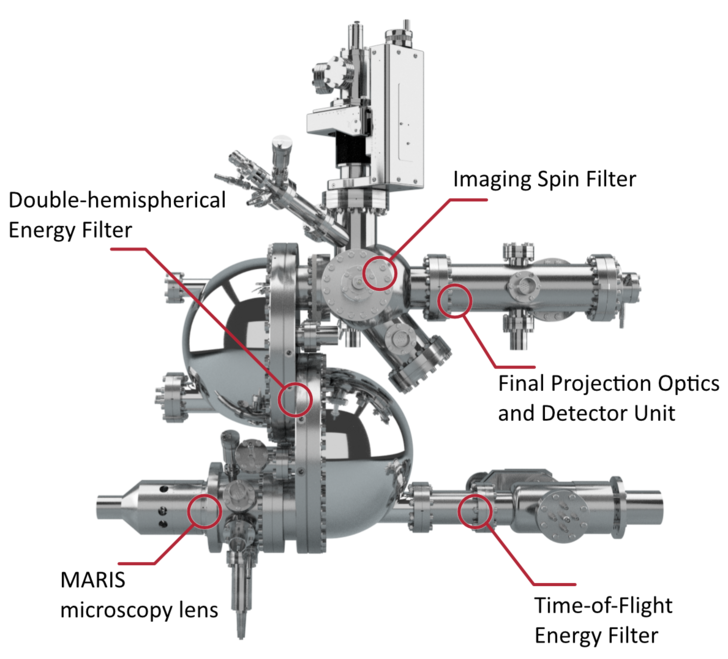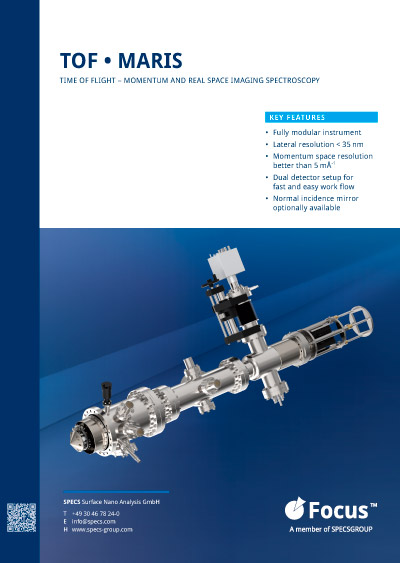 Detail
DetailToF MARIS
Advanced and Modular ToF PEEM and Momentum Microscope
The ToF MARIS is a modern time-of-flight momentum and real space microscope based on the MARIS lens. I combines real space PEEM imaging with high throughput ARPES analysis in k-space for small spot band mapping and electron dynamics analysis. Having access to a pulsed light source makes the ToF MARIS the instrument of choice for momentum microscopy.
FOCUS has a long history of improving this technology, starting with the first lateral-resolved PEEMs in 1995 and publishing the first scientific angle and energy-resolved PEEM results in 2002 (nowadays often referred to as Momentum Microscope). Our first TOF-PEEM with lateral and momentum resolution was build in 2007. The latest revision of our microscope lens was launched in 2022 in combination with a double-hemispherical energy-filter, called NanoESCA MARIS. Besides its high lateral resolution of 35 nm we could improve the momentum resolution by a factor of 3 to reach an unsurpassed momentum resolution of < 0.005 Å-1.
The same lens in combination with a time-of-flight energy filter complements our microscopy product line as TOF MARIS.
Instrumental Layout
The TOF MARIS utilizes two different detectors for an efficient work-flow. The Standard Imaging Unit (MCP + CCD Camera) is used for high count rates (> 30 Mcounts/s) and is perfectly suited to use continous lightsources with a high flux for the initial sample navigation in live view mode, e.g. to find interesting features on the sample under investigation.
Subsequently, the retractable delay-line-detector is moved into the optical axis and used for the time- / energy-resolved measurements with a pulsed light-source.
The microscope can be easily switched between real-space and momentum space projection with the projective lenses before the energy filter.
Parallel energy detection and energy – resolution
The benefit of a PEEM with time-of-flight energy filter is the parallel detection of the angular (or lateral) electron distribution and a large energy window. The data cube on the left was acquired in such a way. It shows the momentum vs energy measurement of a Ag (111) crystal, excited with a laser with a 3.1 eV photon energy.
With a 2 PPE process, electrons between the work function cut-off (E – EF = 4.4 eV) and the Fermi Level (E – EF=6.2 eV) can be acquired. The cube was measured at room temperature.
The Fermi Edge on the right was acquired with the same set-up, but a sample temperature of 45 K. It shows an instrumental energy resolution of ∆Einst = 23.5 meV.
Lateral resolution with Standard Imaging Unit and DLD
The two raw images were measured on the same region of a structured test sample (Si grid covered with Ag) with two different detectors. The image quality and resolutions are comparable. In both cases, a mercury arc lamp was used for photo electron excitation.
The line scans along the marked edges of the structures were fitted with a convolution of a Gaussian and a Heaviside-Function.
The resolution value RES16/84 is the width between 16% and 84% of the profile height. A resolution of 35 nm is achieved with both detectors.
High-pass filter for DLD
Normal Incidence Mirror
A Modular Concept
TOF MARIS (time-of-flight energy filter) and NanoESCA MARIS (double-hemispherical energy filter) follow a modular concept, in which the microscopy lens can be ordered or upgraded with different energy filters. A popular set-up is to combine the MARIS front lens with a double-hemispherical energy-filter (suitable for a wide range of light sources) with a time-of-flight energy-filter (often an efficient choice for pulsed sources).
In accordance with the main scientific application, it is possible to start with a TOF MARIS and upgrade the double-hemispherical energy-filter at a later time, when additional experiments with continuous lightsources and a high flux become of interest. Vice versa, a NanoESCA MARIS can be upgraded with a time-of-flight energy filter. The double-hemispherical energy-filter can be upgraded with an Imaging Spin-Filter.
SPECIFICATIONS
| Kinetic Energy Range | 0-1595 eV |
| Pass Energies | 10 - 100 eV Continously Adjustable |
| Magnetic Shielding | Double µ-Metal Shielding |
| Energy Dispersion | time-of-flight |
| Lens Modes | PEEM Mode, Momentum Resolved Mode |
| Measurement Modes | Snapshot Mode, Sweeping Mode |
| Detector | 2D CMOS Detector |
| Slits/Apertures | 8 positions for apertures and slits |
| Working Pressure | 10-11 to 10-7 mbar |
| Energy Resolution | < 30 meV in MM Mode |
| Angular Resolution | < 0.1° for 0.1 mm emmission spot for He I |
| k-Resolution | 0.005 Å-1 |
| Acceptance Angle | ±90° full cone |
| Lateral Resolution | 35 nm |
| Smallest Acceptance Spot | 6 µm |
| Field of View | 6 µm (with aperture) to 800 µm |
| Working Distance | 2 mm |
| Mounting Flange | DN150CF (8" OD) |
